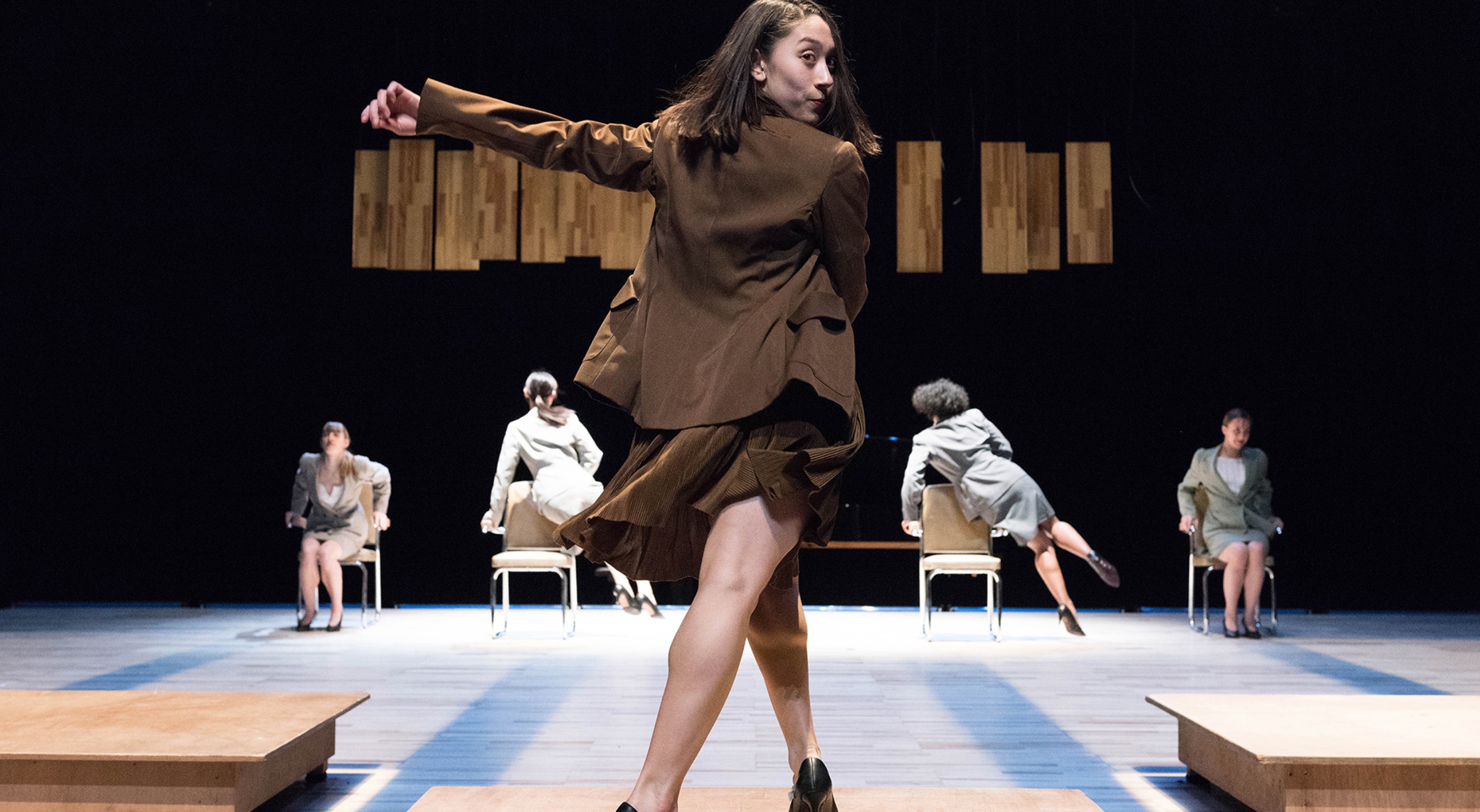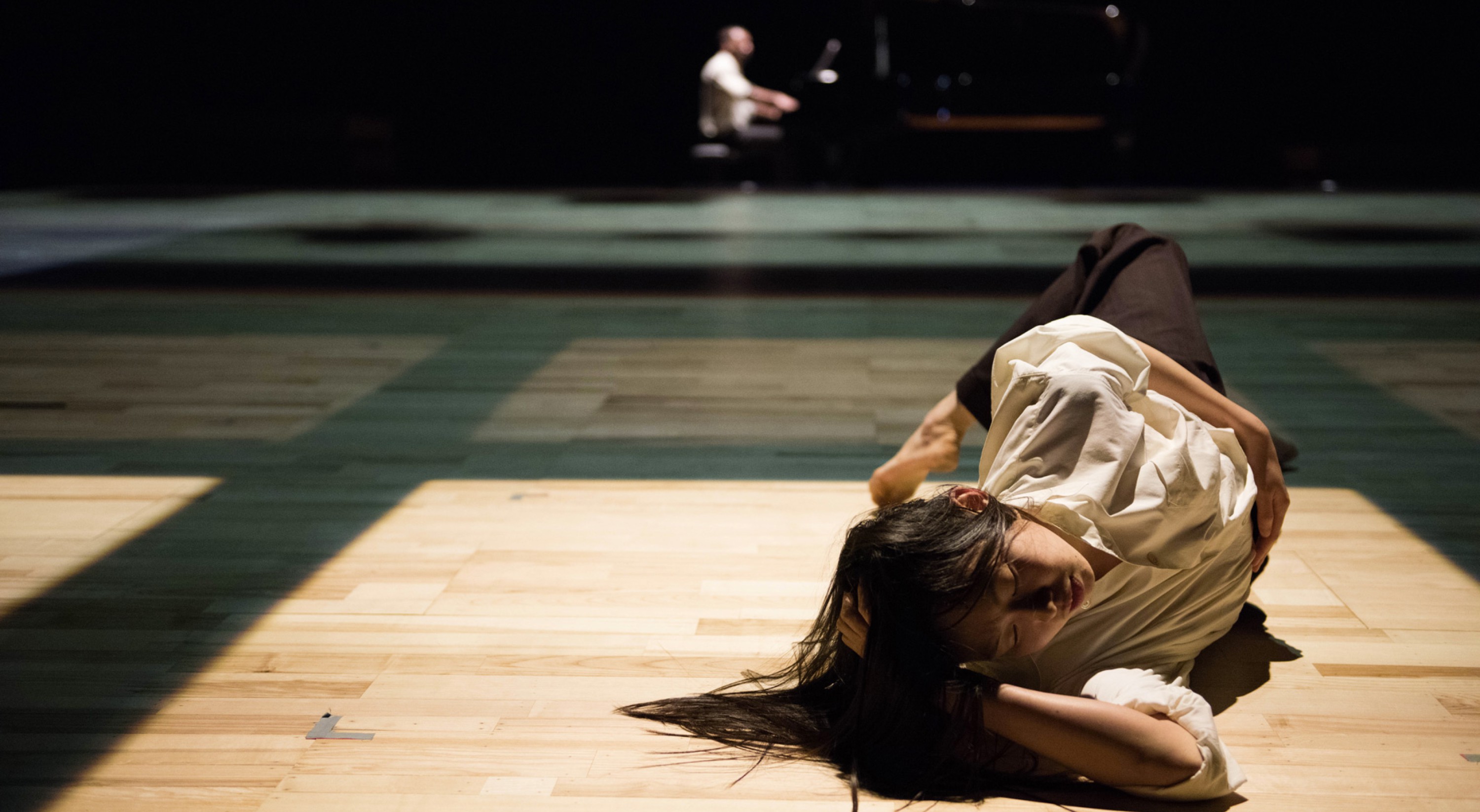Anne Teresa De Keersmaeker
Achterland
octoberoct 16 – 18
decemberdec 20
Choreography, Anne Teresa De Keersmaeker
Music, György Ligeti, 8 Studies for piano solo ; Eugène Ysaÿe, Sonatas 2, 3 & 4 for solo violin
With (alternately) Laura Bachman, Lav Crnčević, Léa Dubois, José Paulo dos Santos, Anika Edström Kawaji, Bilal El Had, Frank Gizycki, Robin Haghi, Yuika Hashimoto, Laura Maria Poletti, Soa Ratsifandrihana, Luka Švajda
Musicians, Wilhem Latchoumia (piano), Juan María Braceras / Naaman Sluchin (violin – alternately)
Set design, Herman Sorgeloos
Lights, Jean Luc Ducourt
Costumes, Ann Weckx
A Rosas production
A coproduction (1990) La Monnaie / De Munt (Brussels) ; Fondation Van Gogh (Amsterdam) ; Rotterdamse Schouwburg ; Théâtre de la Ville-Paris
In association with Maison des Arts Créteil ; Théâtre de la Ville-Paris ; Festival d’Automne à Paris for performances at Maison des Arts Créteil
First performed on 27 Novembre 1990 at La Monnaie / De Munt (Brussels)
The Fondation d’entreprise Hermès is the patron of the Anne Teresa De Keersmaeker Portrait.
In partnership with France Inter
Achterland, a milestone in Anne Teresa De Keersmaeker’s work, marks the transformation of the minimalism of her earlier pieces. It does so by integrating into its syntax an increasingly large and complex range of movements. Both joyful and meditative, the composition leaves room for variation, friction - and full cohabitation of the space by both dancer and musician.
––––––
Running time: 1h30
See also
In the same place


